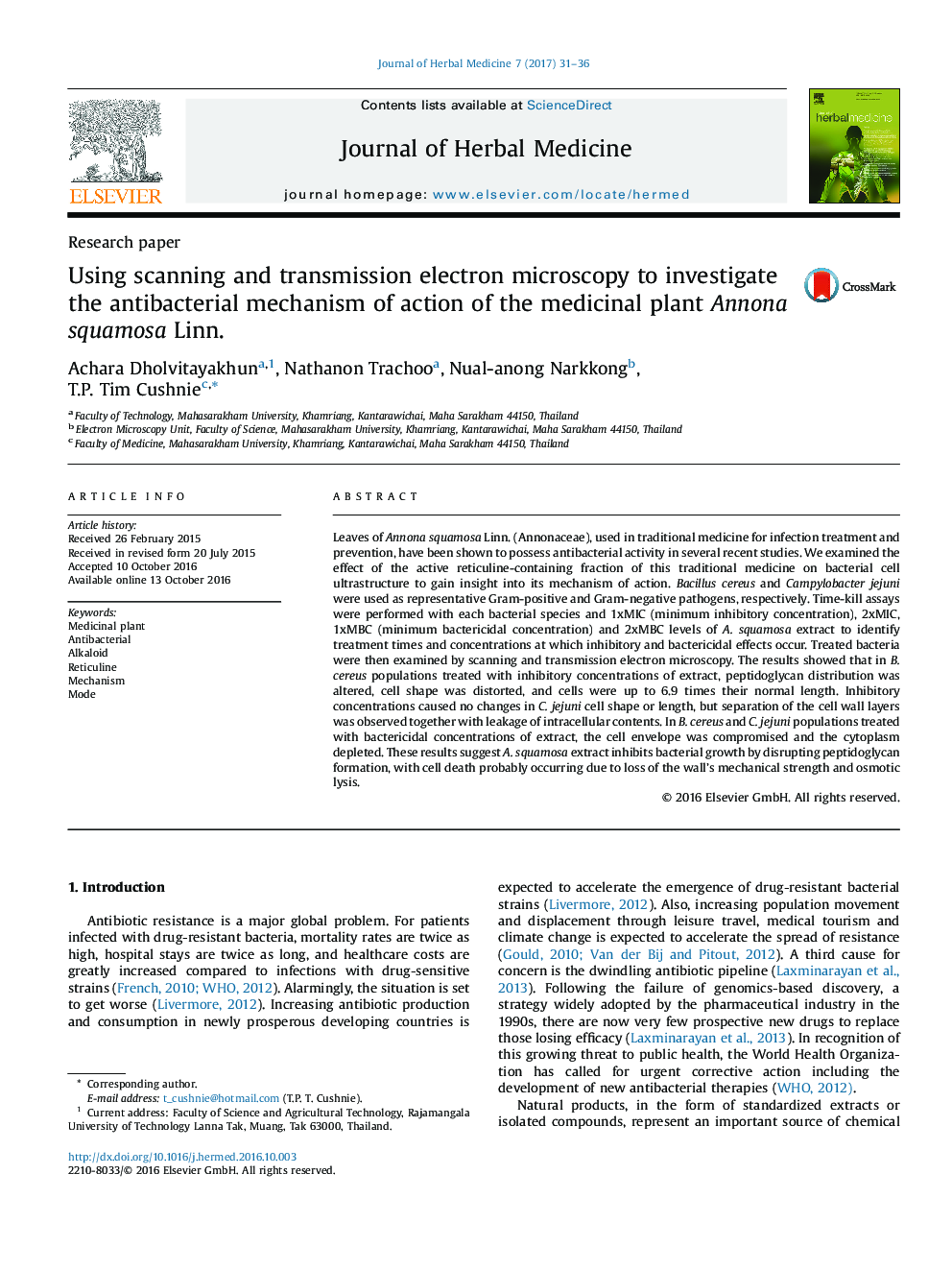| کد مقاله | کد نشریه | سال انتشار | مقاله انگلیسی | نسخه تمام متن |
|---|---|---|---|---|
| 5548276 | 1556485 | 2017 | 6 صفحه PDF | دانلود رایگان |

- First study into antibacterial mechanism of action of the medicinal plant Annona squamosa Linn.
- Ultrastructure of Gram-positive and Gram-negative pathogens examined following treatment.
- Inhibitory treatments alter peptidoglycan distribution and cause cell wall layers to separate.
- Bactericidal treatments cause malformation of cell wall and leakage of intracellular contents.
- A. squamosa disrupts cell wall formation with bacterial death likely to be due to osmotic lysis.
Leaves of Annona squamosa Linn. (Annonaceae), used in traditional medicine for infection treatment and prevention, have been shown to possess antibacterial activity in several recent studies. We examined the effect of the active reticuline-containing fraction of this traditional medicine on bacterial cell ultrastructure to gain insight into its mechanism of action. Bacillus cereus and Campylobacter jejuni were used as representative Gram-positive and Gram-negative pathogens, respectively. Time-kill assays were performed with each bacterial species and 1xMIC (minimum inhibitory concentration), 2xMIC, 1xMBC (minimum bactericidal concentration) and 2xMBC levels of A. squamosa extract to identify treatment times and concentrations at which inhibitory and bactericidal effects occur. Treated bacteria were then examined by scanning and transmission electron microscopy. The results showed that in B. cereus populations treated with inhibitory concentrations of extract, peptidoglycan distribution was altered, cell shape was distorted, and cells were up to 6.9 times their normal length. Inhibitory concentrations caused no changes in C. jejuni cell shape or length, but separation of the cell wall layers was observed together with leakage of intracellular contents. In B. cereus and C. jejuni populations treated with bactericidal concentrations of extract, the cell envelope was compromised and the cytoplasm depleted. These results suggest A. squamosa extract inhibits bacterial growth by disrupting peptidoglycan formation, with cell death probably occurring due to loss of the wall's mechanical strength and osmotic lysis.
418
Journal: Journal of Herbal Medicine - Volume 7, March 2017, Pages 31-36